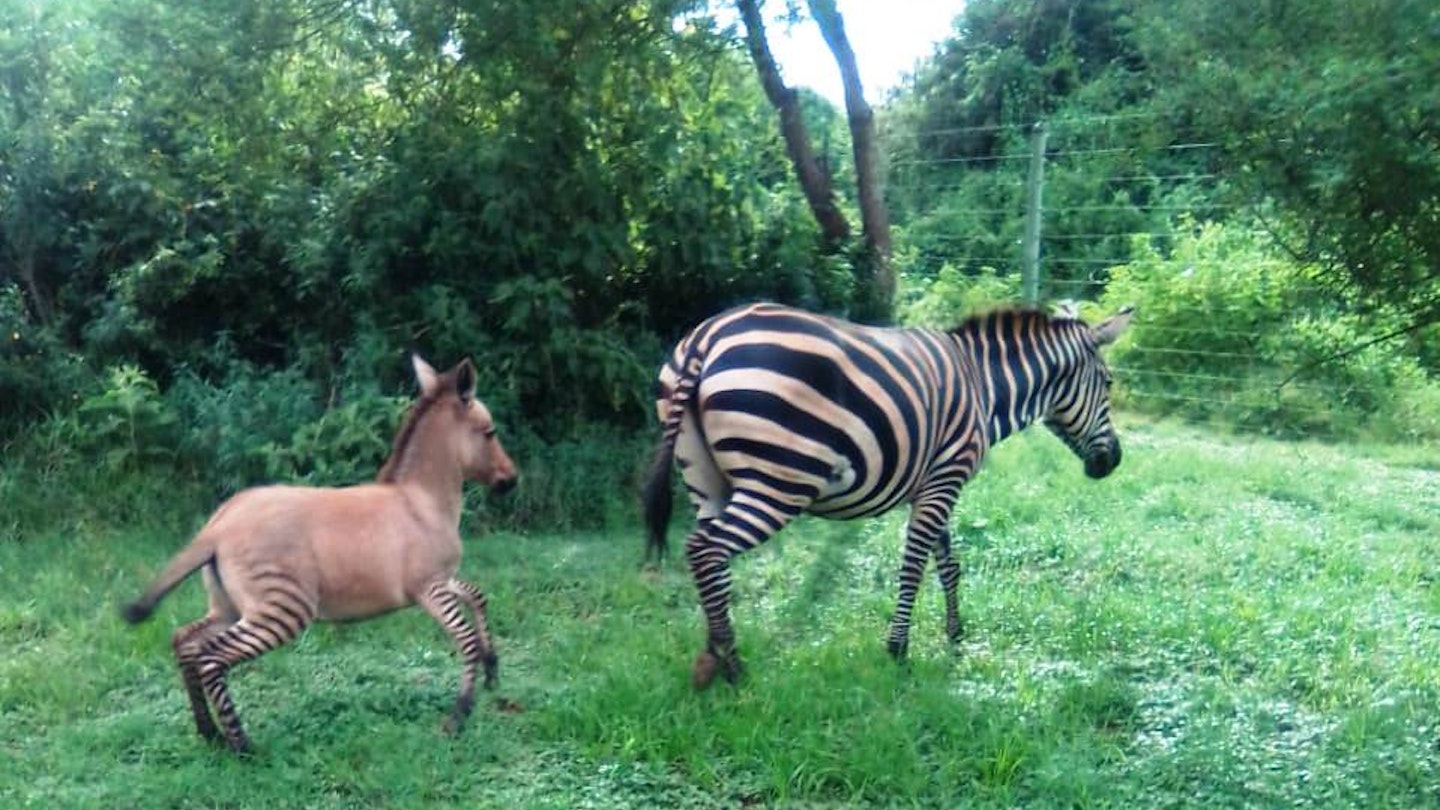Rangers at a wildlife park in Kenya are overjoyed after discovering that a zebra in the park has given birth to a zonkey.

A zebra at Chyulu Hills National Park in Kenya was spotted by rangers tending to an unusually-looking foal earlier this year. The foal exhibited the characteristic stripes of a zebra on its legs, yet its head and body bore the solid tawny color of a donkey. After a thorough examination, conservationists from the Sheldrick Wildlife Trust, a nonprofit organization dedicated to animal rescue and rehabilitation, discovered that the foal wasn’t simply a zebra but a zonkey, a rare zebra-donkey hybrid.
Before settling in Chyulu, the mother zebra had ventured out of the Tsavo East National Park and became an “honorary member of a local woman’s cattle herd,” a spokesperson from Sheldrick explained. It seems that while living in this situation, the zebra encountered an “amorous donkey” and mated with him. When it became evident that the zebra was pregnant, Sheldrick conservationists relocated her to Kenze Anti-Poaching Team’s base in Chyulu National Park for closer monitoring, not anticipating that she would give birth to a zonkey.
“Working with wildlife, one learns to expect the unexpected,” the rescue group described. “Even the most seemingly straightforward story can eventually reveal its true stripes and unexpectedly surprise us all. Initially, we thought that [the foal] had merely been wallowing in the mud bath, but then the truth dawned on us: Our wayward zebra had given birth to a zonkey!”
Cross-breeding between zebras and other members of the equine family is rare but not unheard of; however, it is more unusual for the zebra to be the mother. These hybrids, sometimes referred to as zebroids, are rarely spotted in the wild. These striking creatures display the sturdy body of a donkey complemented by the striped legs of a zebra, as outlined by experts at Sheldrick. Additionally, since they are mules, they cannot produce offspring of their own.
Currently, both the mother and baby are reported to be “thriving” in an area of the park characterized by a lack of predators and abundant water and grass. It is hoped that they will eventually integrate into a zeal, or group, of wild zebras when the time is right.
“Until that day arrives, they seem quite content grazing side-by-side,” stated the team at Sheldrick, “a sight that makes us all stop and marvel at the wonders of nature.”




